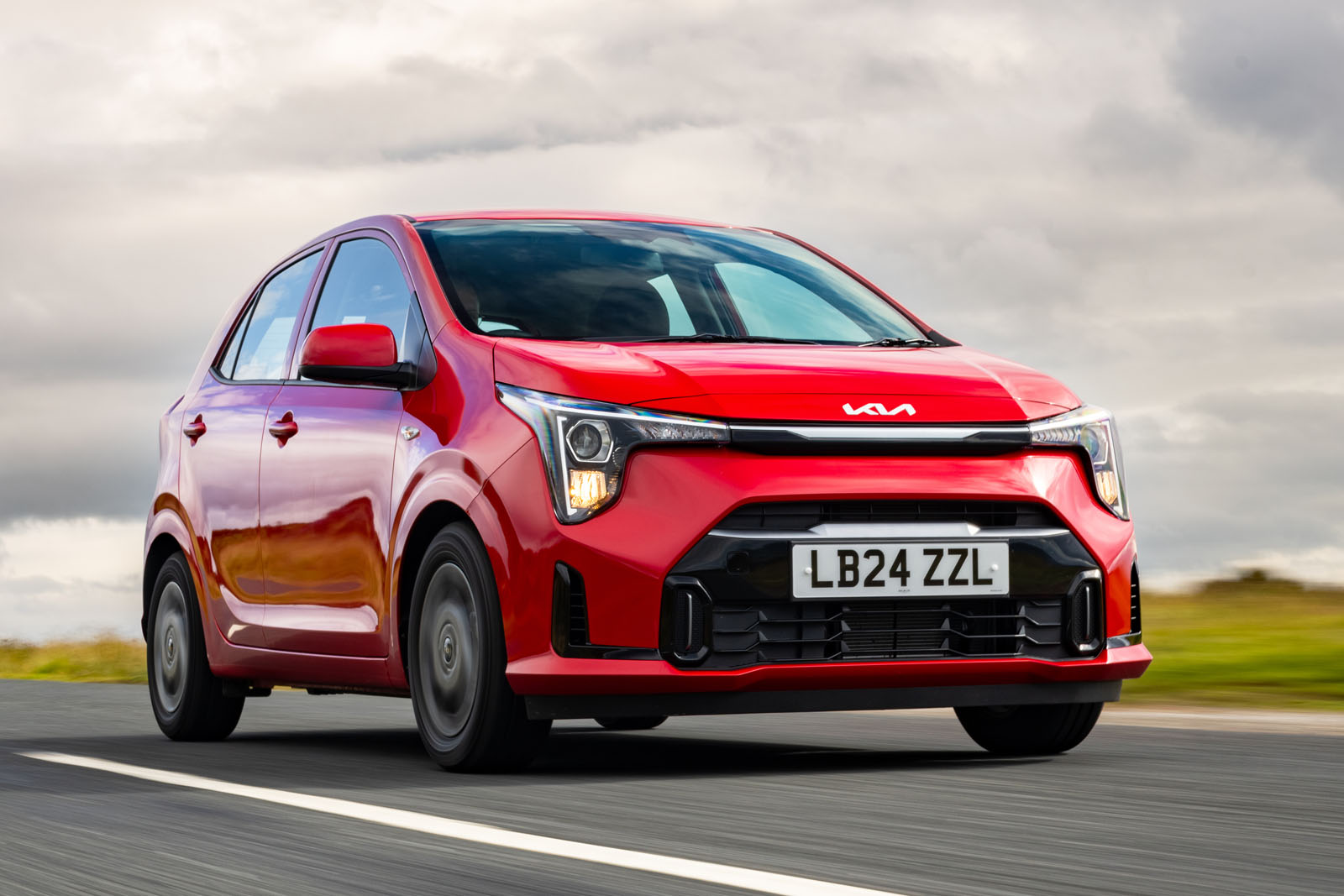The 2024 facelift has given Kia the opportunity to update the interior materials and technology, but it hasn’t made any drastic changes. It’s still an attractively designed cabin – not as playful perhaps as the Toyota Aygo X’s or the late VW Up’s, but with enough of a styling flourish in the shape of the rounded air vents.
Almost everything is made from fairly cheap-looking hard plastic, but that’s par for the course in an A-segment hatchback, and everything feels sturdy enough. Even in the entry-level 2, Kia has quite cleverly upholstered the gear knob and steering wheel in artificial leather, so the main touchpoints are nice enough. Being an older design, there are also fully physical buttons and dials for the heating and ventilation.
Analogue gauges have been ditched for 2024, though. Instead, there’s a fairly basic digital gauge cluster with big numbers for the speed and revs.
The driving position is decidedly ‘city car’, however. With a fairly flat seat and no reach adjustment for the steering column, drivers will ideally be short of leg and long of arm. Although the GT-Line has sportier-looking leatherette upholstery, the seats themselves are the same and no more comfortable. That said, credit to Kia for fitting proper seats with separate, adjustable headrests up front, rather than chairs with integrated head restraints, which are seldom as comfortable
The 255-litre boot is impressively deep, and so long as the people in the front don’t mind some knee-powered lumbar support, you can just about cram four people into this small car.
Infotainment and multimedia
A touchscreen used to be fitted on only higher trims, with cheaper versions getting a fairly simple radio head unit with a few buttons and a segmented display. From 2024, all Picantos feature an 8.0in touchscreen. It runs an older version of Kia’s software yet works logically enough and even includes built-in navigation. The standard audio system is nothing special but better than you might expect in an entry-level car. Apple CarPlay and Android Auto both require a USB-A connection.

